At some point, every car requires new tires. Since you want to budget accordingly, it’s important to know how much does it cost to replace your tires?
In this guide, we cover the varying factors that influence the new tire price. We also give you a few tips that may help you save some money.
Table of Contents
1
How Much Do New Tires Cost?A new set of four tires will usually cost you between $400 and $1500, depending on the type of tire, vehicle, quality and where you get them installed. If you choose cheap tires, you may be able to spend $50 each, but on some vehicle types, you can easily spend $1500 or more on a new set of tires.
Now that we have the quick answer to the general cost of new tires, let’s take a closer look at the factors that affect the cost.
Factors Affecting Cost to Replace Your Tires1.The biggest factor affecting your expense will be the size of the tire you need. You can find tires in all sizes, meant for a multitude of purposes. If you have a compact car, you will have the cheapest tires available, maybe even $50 each.
Of course, high-performance cars, large pickup trucks, specialty off-road vehicles, and SUVs will naturally cost more. A good rule of thumb is that the larger the tire is, the more you can expect to pay for it.
2. BrandThere are just as many tire brands as there are sizes. Many tire shops specialize in one budget brand and carry a multitude of name brands.
You will spend far less to go with the no-name brand, but you need to think about the quality. After all, if you save money today by choosing this brand, does it really pay off if you have to replace the tires again prematurely? You may also get a much longer mileage warranty with quality tires, than with inexpensive tires.
If you choose a premium tire brand such as Michelin, Continental, Goodyear, Bridgestone, you will of course pay much more, but you know that you will get quality tires that last a long time and keep your vehicle on the road.
RELATED: 6 Worst Tire Brands to Avoid Buying
3. Installation CostMost tire shops do not make a lot of money on the tire installation. The job itself doesn’t take long and the price can often be included with the cost of the tires.
On average, you can expect most shops to tack on about $20-$40 per tire for the installation. However, if you visit a warehouse club, that expense could be even less.
4. Tire DisposalYou don’t get to leave your old tires with the shop without paying a price. These shops must pay to have them recycled, so that cost gets passed down to you.
On average, the tire disposal fees will be between $2 and $10 per tire to dispose of them. If you would rather save this money, you can get rid of them yourself.
5. Road Hazard/Warranty ProtectionOn top of the regular price paid for your tires, you may choose to add some extra warranty protection. With road hazard protection, you are covered if your tires get a hole or blow out.
However, you must be careful who you choose to get road hazard through. Not all companies are going to follow through on the agreement, leaving you paying for protection that doesn’t matter when something actually goes wrong.
6. Wheel AlignmentWhen your new tires are installed, you will need to get a wheel alignment. Having properly aligned tires ensures that they last as long as possible.
You might pay between $75 and $200 to have the wheels aligned, depending on how many need to be done. However, this money can be seen as an investment, ensuring that your tires continue to provide reliable transportation.
How to Save Money on Tires1. Shop AroundThe most important factor is shopping around. You can call one location and get a price on a particular set of tires and the cost is completely different somewhere else, even though they are the same tires.
When you are shopping around, keep a couple of costs in mind.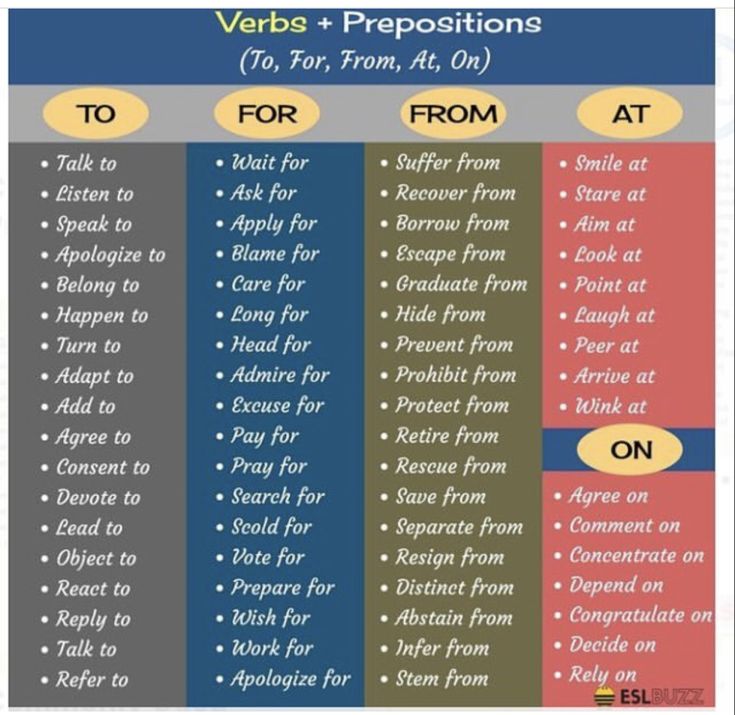 You will have the cost of the tires, the cost of installation and any fees that the company charges. Ask for the “out the door” price, so you can compare it apples-to-apples.
You will have the cost of the tires, the cost of installation and any fees that the company charges. Ask for the “out the door” price, so you can compare it apples-to-apples.
RELATED: How Much Do Rims Cost?
2. Watch for SalesYou can get a great deal if you shop during a sale. Of course, it’s not always convenient to wait for the next sale, but if you have some time before the tires need to be changed, this is a great way to save.
Throughout the year, tire shops will offer various sales. You can take advantage of a Buy 3, Get 1 Free deal or enjoy a certain percentage off. Most tire sales correspond with holidays, so you can tell when one might be around the corner.
3. Take Advantage of RebatesTire shops don’t often make a whole lot on the tire, so discounts can be limited. However, the manufacturers are happy to offer rebates throughout the year.
Most of the rebates are through the mail but can be found online.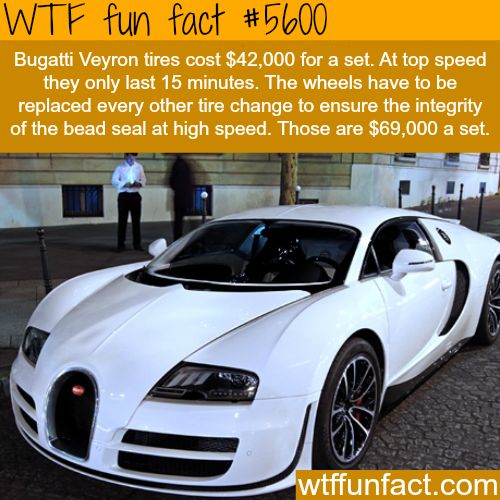 Additionally, the tire shops have the inside scoop on what’s available, so be sure to ask.
Additionally, the tire shops have the inside scoop on what’s available, so be sure to ask.
It’s not always wise to purchase used tires, but the takeoff is something entirely different. These tires were installed brand-new and only used for a couple of days before the customer decided they didn’t want them.
It could be that the client didn’t appreciate the ride or simply decided they wanted something better. Either way, the tire shop will offer the replacement tires at a discounted price, so be sure to ask what’s available, especially if you use a popular tire size.
5. Use All-Season TiresIf you live in a cold climate where a lot of snow falls, you might have two sets of tires. Most people in these regions use summer and winter tires. With two sets of tires, you have a lot more money out, especially every time you need to have them switched.
If you aren’t actually driving in the snow, it might be better to use all-season tires throughout the year.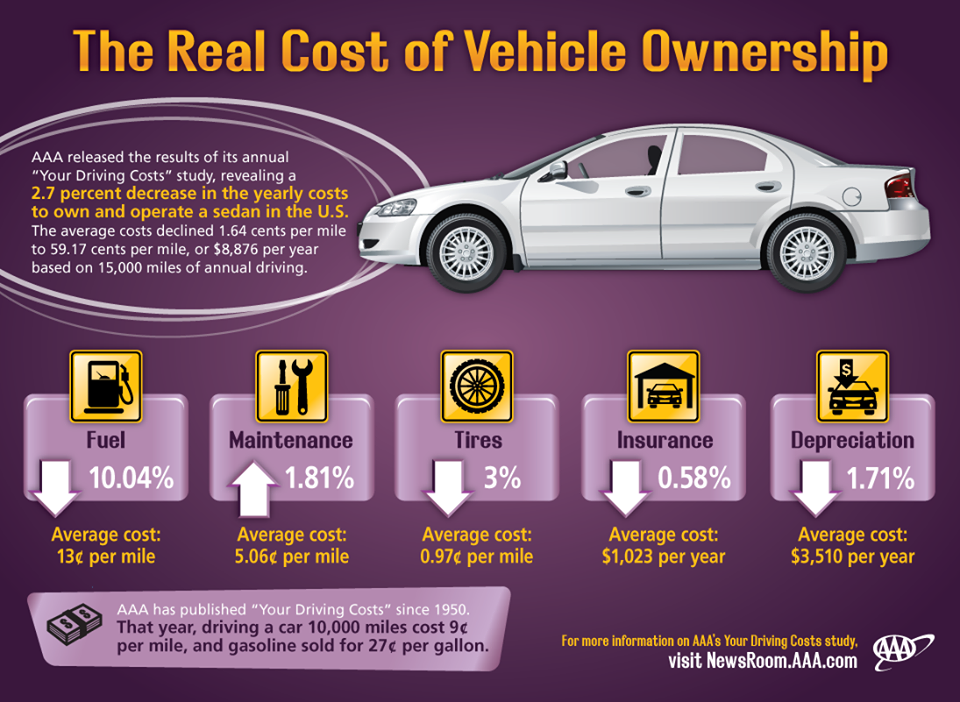 While these aren’t going to get you through deep snow, there’s no sense spending more for something you don’t need. Evaluate your options and see if you can stick to using one set all year long.
While these aren’t going to get you through deep snow, there’s no sense spending more for something you don’t need. Evaluate your options and see if you can stick to using one set all year long.
RELATED: 10 Best All-Season Tires – Review & Buyer’s Guide
The lifespan of a tire will depend on the type of tire, the type of driving you do, and the climate. Generally, tires last between 50,000 and 80,000 miles and 6 years. If you drive a lot in city traffic and brake a lot or live in a hot climate, your tires may wear out sooner. If you often drive around with low tire pressure or a bad wheel alignment, they may also wear down sooner.
If your tire tread depth is close to 2/32” or under, it’s definitely time to replace them.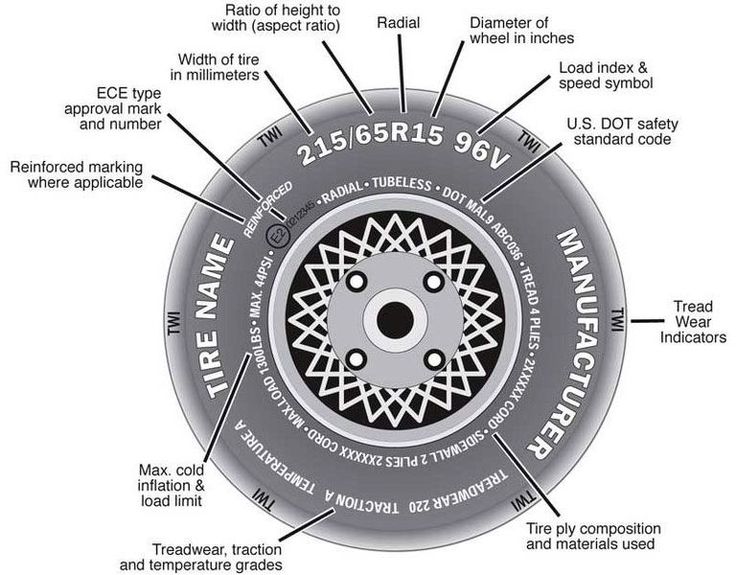 Most tire manufacturers recommend replacing tires every 6 years, regardless of the number of miles driven. This is because tire rubber degrades over time, even if the tires are not used. Tires that are more than 6 years old should be inspected by a professional to determine if they are safe to use.
Most tire manufacturers recommend replacing tires every 6 years, regardless of the number of miles driven. This is because tire rubber degrades over time, even if the tires are not used. Tires that are more than 6 years old should be inspected by a professional to determine if they are safe to use.
If your car is two-wheel-drive, it’s fine to replace two tires on the same axle instead of four, although you need to consider that your car will handle differently with two new tires than with four. If you are replacing two tires, it is best to put the new or best tires on the rear axle, as this will improve traction and stability.
On many 4WD and AWD cars, however, the diameter of the tires must match, otherwise, you can damage the transmission or the differential. Therefore, it is recommended to replace all four tires on 4WD cars, and it’s a requirement for many car brands like BMW and Audi.
You need to read the tire dimensions on your old tires and take them to the tire shop. You can also call your authorized dealer or check your owner’s manual if the wheels are stock.
You can also call your authorized dealer or check your owner’s manual if the wheels are stock.
Most people get nervous when it’s time to get a new set of tires. You know tires aren’t cheap, but just how much can they cost? And it doesn’t stop here: there are additional service costs, tire disposal fees, installation costs, and road hazard warranty, all of which can make a significant dent in your wallet.
The average cost of tires and installation for economy and sedan cars ranges from $50 to about $75. For sports cars and SUVs, the price jumps significantly to somewhere between $100 and $300 a piece and can even go higher sometimes.
I’ll take you through the process of tire change, balancing, and installation in the next segment of this article. This will help you better understand what goes into a tire change and why professionals charge so much for the service.
» QUICK NAVIGATION «
The price for new tires and installation has changed over the years.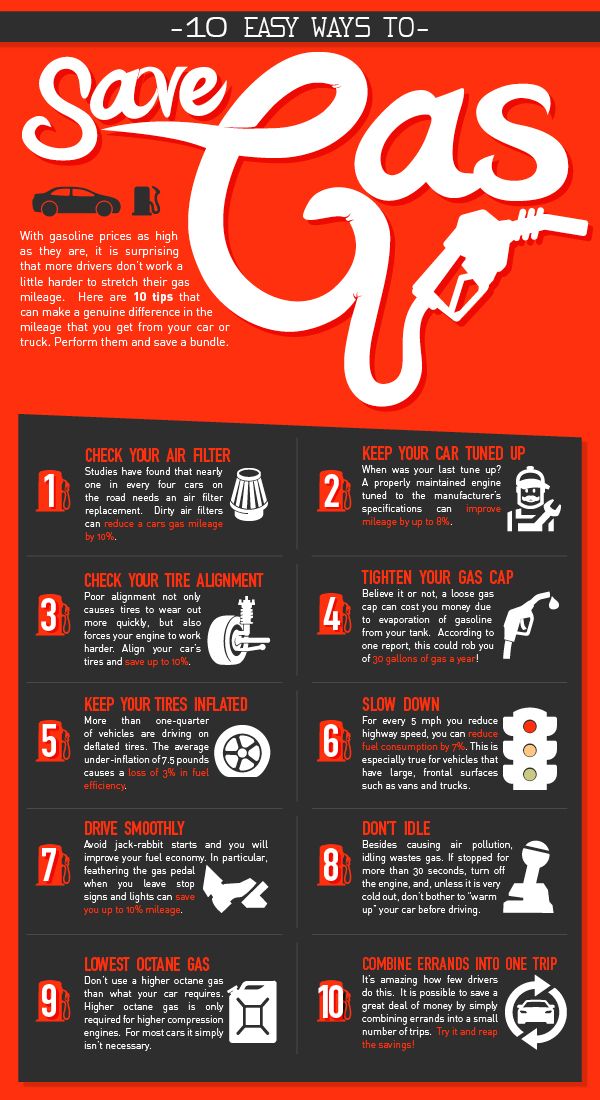 Tires have become more complicated, and the automotive industry regulations are changing rapidly. The discontinuation of lead wheel weights, the adoption of improved tire pressure monitoring systems, and the craving for larger stylish rims have made the process even more complicated and pricey.
Tires have become more complicated, and the automotive industry regulations are changing rapidly. The discontinuation of lead wheel weights, the adoption of improved tire pressure monitoring systems, and the craving for larger stylish rims have made the process even more complicated and pricey.
You can’t install economy or sedan car tires on a sports vehicle, nor can you install SUV tires in a pick-up truck. Based on a car’s rim size, suspension system, and volume, you’ll have to look for specifically sized tires. Moreover, manufacturers recommend specific tire sizes and types, and you should stick to their recommendations if you want to avoid causing severe damage to your car. Remember, each tire size and type has its price tag.
Your best bet in estimating how much the tires and installation will cost would be to contact your mechanic with your exact tire size and type for a price estimate. But what entails the entire tire installation service? And how much does each process cost?
Once you’ve determined that it’s time for new tires, you’ll want to know the correct tire size for your car.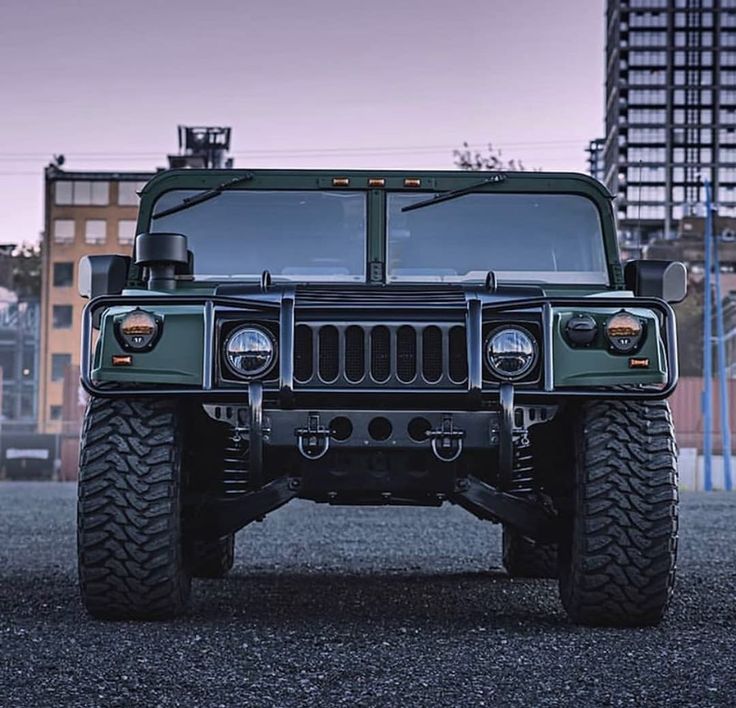 You can check your car’s door jamb for tire size information in the car’s manual. Ensuring your tire replacements match the manufacturer’s instructions requires your understanding of how tire size works. The string of numbers you rarely pay attention to on your tires contains tire size information.
You can check your car’s door jamb for tire size information in the car’s manual. Ensuring your tire replacements match the manufacturer’s instructions requires your understanding of how tire size works. The string of numbers you rarely pay attention to on your tires contains tire size information.
Assume the string of numbers and letters on your tire walls is P 225/70R16 91S. Each of these numbers and letters stand for the following:
 R stands for radial. Others include D and B for Diagonal and Bias Ply, respectively, but Radial construction is the most common in the US.
R stands for radial. Others include D and B for Diagonal and Bias Ply, respectively, but Radial construction is the most common in the US.If you want to change your tire size and type, consult an expert for advice. As you’ve already seen, different tire options have varying load capacities and require different rim widths and diameters.
Of course, I don’t want to delve deeper into the science of tires, so I’ll only focus on the cost aspect: different tire sizes and types will be priced differently.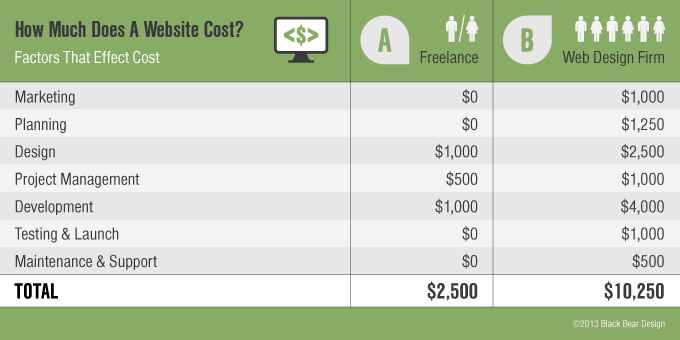
Below is a table giving cost estimates of the different tire types and sizes:
| Wheel size | All-Season (Average Price) | All-Terrain (Average Price) |
| Small (12”-15”) | $50-$150 a piece | _ |
| Medium (16”-20”) | $100-$250) a piece | $150-$250 |
| Large (18”-26”) | $150-$400 a piece | $200-$1000 |
Regular tire mounting cost is no different across various automotive repair shops.
A professional tire installation service entails professional mounting, installation, and wheel balancing. Proper wheel balancing guarantees optimum tire life and your car’s safety. Incorrectly balanced tires cause unpleasant vibrations and make your tires and suspension wear prematurely.
You may also like to check: How Much Does Walmart Charge for Tire Installation?
When you take your car into an auto repair shop, the mechanic starts by unscrewing the wheels from your car. At this point, the mechanic can quickly inspect your brake and suspension systems, but this shouldn’t replace full brakes and suspension system inspections.
The technician should also inspect the condition of the wheel studs and lug nuts to ensure that the wheel is secured safely and firmly. You shouldn’t pay for this; it’s part of the installation.
Once the technician removes the wheel, the next step should be to remove the tire from the wheel (rim). Specialized equipment is needed. The process isn’t for the hands of your regular home mechanic.
First, the technician removes balancing weights and the valve system to deflate the tires. Next, the mounting machine presses the tire out of the wheel, and the mechanic pulls and pries at the tire to carefully detach it from the rim.
The mechanic inspects the wheel for potential damage and cleans it of dirt and debris. Defects to the wheel may affect how well it bonds with the tire and how it will balance when mounted back to the car. The mechanic should also thoroughly clean bead areas where the tire touches the rim.
Newer car models feature a tire pressure monitoring system to keep tabs on air pressure in the tires. The technician should inspect and service the TPMS sensors with new seals for smooth operation. Check whether the TPMS serving cost is included in the installation fee. If not, the TPMS service kit should cost $5-$10 per wheel.
Sometimes the sensors will be faulty and will need replacing. In most cases, TPMS sensor replacement cost isn’t included in the installation fee. TPMS pressure sensors’ cost ranges from $50-$250, depending on your car model.
The technician will then use a tire mounting machine to press the tire bead over the rim, replace the valves, inflate the tire, and check for leaks.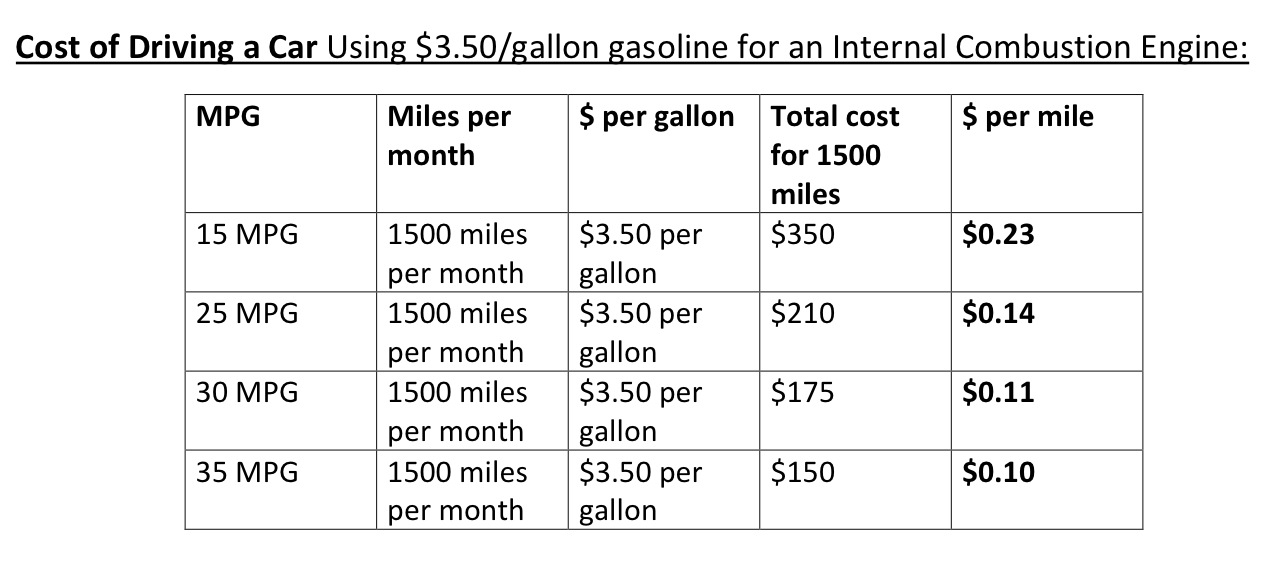 The technician should be careful not to damage the TPMS sensors.
The technician should be careful not to damage the TPMS sensors.
Imbalanced wheels impact your driving experience by causing excessive vibrations, accelerating tire wear, and causing possible damage to the undertrain or suspension system.
The next (and one of the most important steps) is wheel balancing. The technician will use a tire assembly balancing machine to spin the assembly at high speed to detect heavy spots. The machine will pause the spin at the exact spot where weights are needed to balance the wheel. The mechanic will repeat the process until the whole tire assembly is balanced.
Again you should check whether the wheel balancing cost is included in the installation fee. Some repair shops offer a complete package, which is higher than the standard wheel installation cost, and some don’t. Depending on your location and car, you can expect to pay between $40 and $75 for balancing all four wheels.
The technician will then mount each wheel assembly back to the car and torque the lug nuts to the correct tightness.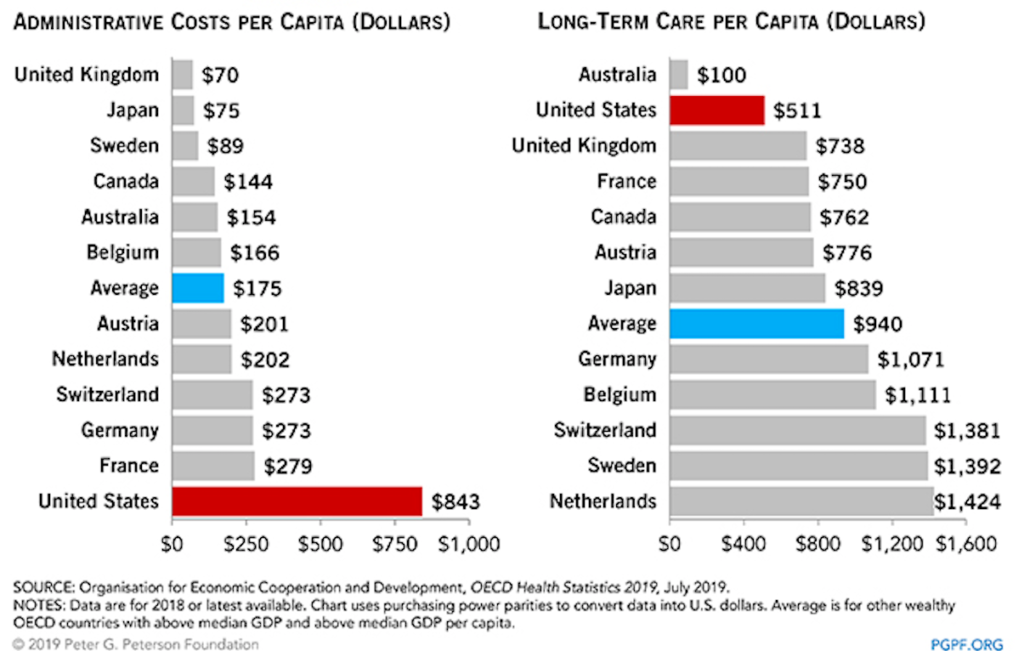 This process is naturally included in the service fee, and you shouldn’t be expected to pay anything extra. While still on the service bay lift, you can request wheel alignment.
This process is naturally included in the service fee, and you shouldn’t be expected to pay anything extra. While still on the service bay lift, you can request wheel alignment.
The technician may also recommend an alignment. Wheel alignment, also known as breaking or tracking, is standard automobile maintenance that involves adjusting the vehicle’s wheel angles back to the automaker’s specifications. Wheels’ alignment angle refers to the wheel’s angle to each other and the vehicle’s body.
Misaligned wheels cause unnecessary wear to the steering, brakes, tires, and suspension. Aligning your wheels will improve the vehicle’s stability, maximize tire life, and improve car handling performance.
It would be best to have your wheels aligned every 6000 miles (10,000 km) or when you start feeling changes in the driving experience or ability to handle the car.
If you lost track of your alignment schedule, make sure you align your wheels if you experience the following:
If wheel alignment isn’t part of the installation package, you can request for the same or if the mechanic sees it fit.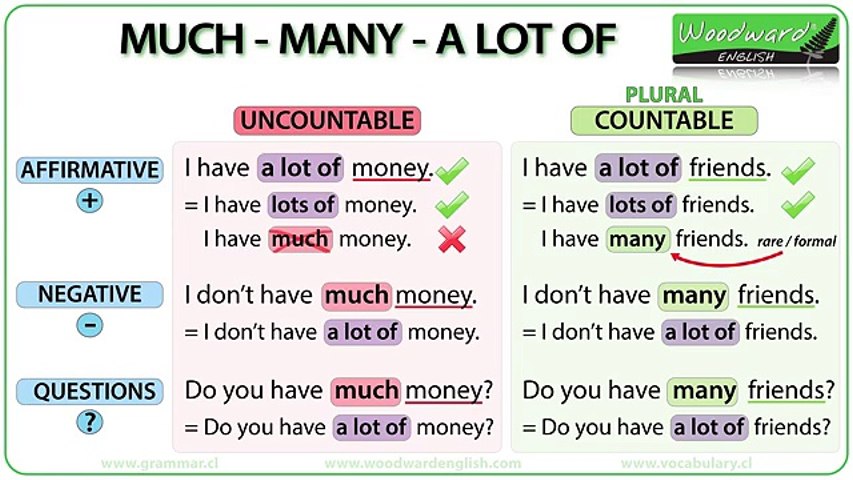
The cost of front-end alignment, which typically involves the two front wheels only, can cost anywhere from $50 to $75. All-wheel alignment costs more, typically from $100 to $150. You can expect to dig your pockets deeper if you own a luxury car.
This Youtube video explains the difference between wheel balancing, rotation, and alignment.
After rechecking everything, the mechanic will lower your car from the lift. Once on the ground, the technician can use a torque wrench to recheck the lug nuts’ tightness to ensure the wheels are stable and firmly fixed as they should be.
Moreover, the tire pressure should be set to correct levels as recommended by the manufacturer on the tires’ placard.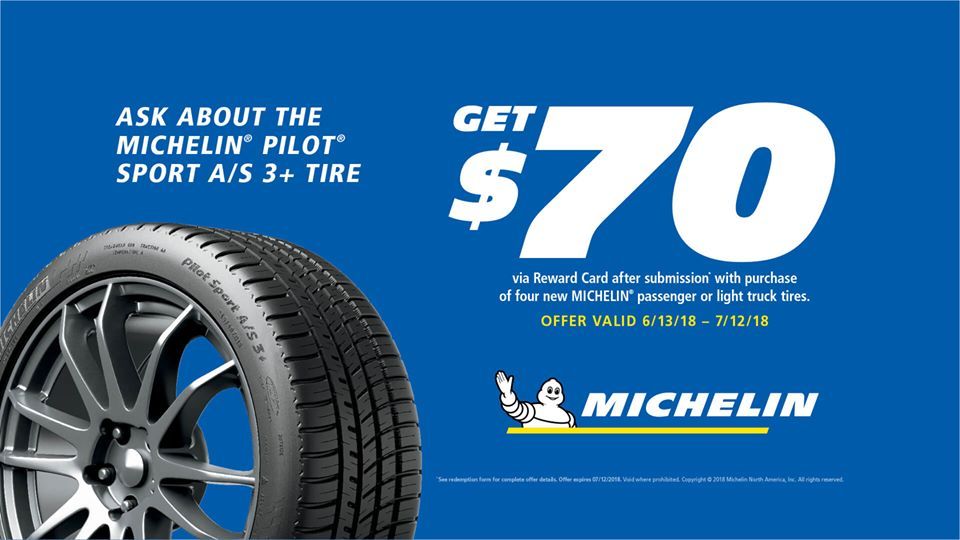
Tire retailers offer a road-hazard warranty to cover you with prorated discounts if your tire is damaged. The warranty comes for a small fee, which might or might not be included in the installation cost.
On the other hand, tire manufacturers offer mileage warranties to guarantee that you won’t have to replace the tires before a specific mileage. Typical mile range is 20,000-80,000 miles.
In return, you must align your wheels regularly and perform rotational maintenance so that the tires don’t wear out prematurely. High-mileage warranty will cost more but will be beneficial if you drive a lot. However, not all tire makers offer mileage warranties, so you’ll want to ask about this when choosing the make of your tire replacement.
Tires are hazardous waste, and disposing of your worn-out tires will cost you anywhere from $2 to $6. The cost varies depending on whether you dump them off at a recycling facility or pay a tire dealer to dump them for you. You can also generously donate them to someone who needs them.
You can also generously donate them to someone who needs them.
Your busy schedules shouldn’t stop you from checking your tires thoroughly for wear and damage. But how would you know they need replacing?
You can try this Steelman Digital Tire Tread Gauge available on Amazon.com. It reads tread depths from 0-25mm or 0-1 inch.
A lot goes into maintaining a car, and taking care of your tires is an essential part of the process. They are the components that carry the vehicle and are thus prone to wear and damage.
Replacing tires costs money, as does maintaining your car’s suspension system. The cost of replacing and installing new tires will depend on your car’s tire size and type. And, of course, your car model matters too.
RELATED POSTS:
SHARE ON:
Monday, November 21, 2016 15:12:13 Europe/Moscow
How to determine the date of manufacture of a tire and the necessary service life, at which its technical characteristics and functionality will be at the highest level?
When the minimum tread depth is reached (4 mm for winter tires and 1.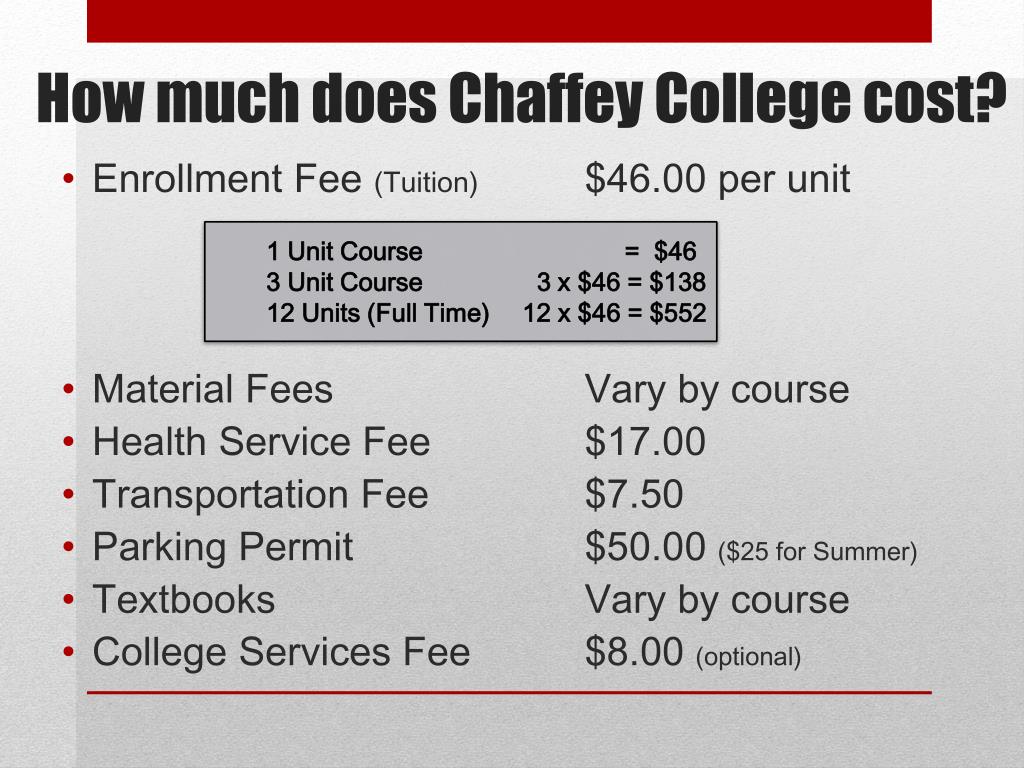 6 mm for summer tires), the tires are taken out of service and disposed of. As for the period of use over time, according to the recommendation of tire manufacturers, tires should not be used for more than ten years from the date of manufacture. At the same time, it is worth distinguishing between the concepts of "service life" and "manufacturing warranty period". The latter is established by law and in the Russian Federation is five years from the date of production. During the warranty period, the manufacturer is responsible for the full compliance of the tire with all necessary technical requirements.
6 mm for summer tires), the tires are taken out of service and disposed of. As for the period of use over time, according to the recommendation of tire manufacturers, tires should not be used for more than ten years from the date of manufacture. At the same time, it is worth distinguishing between the concepts of "service life" and "manufacturing warranty period". The latter is established by law and in the Russian Federation is five years from the date of production. During the warranty period, the manufacturer is responsible for the full compliance of the tire with all necessary technical requirements.
The date of manufacture of a tire is one of the mandatory markings and is applied to one of the sidewalls of the tire in the lower part of it, next to the seat area for the disc. This marking is a set of four digits, where the first two digits are the week of production, and the last two are the year .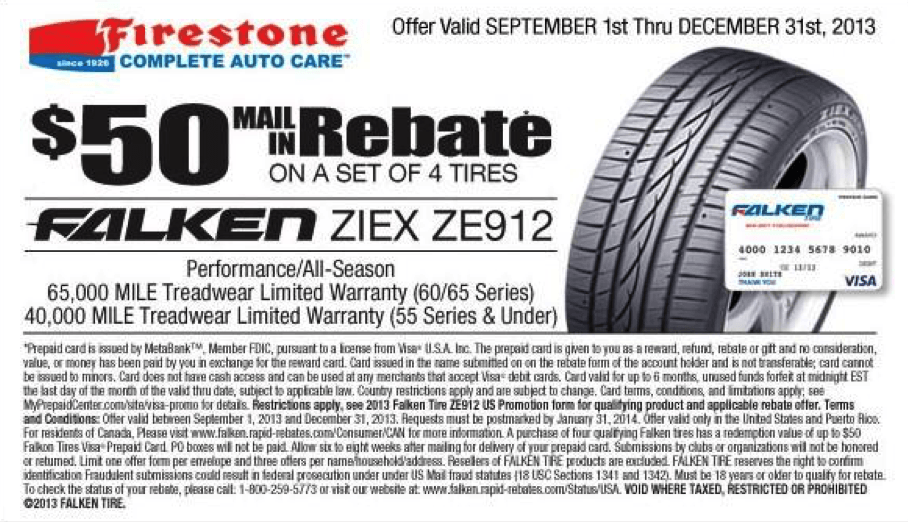 For example, "4815" means that the tire was manufactured in 2015 at week 48. In some cases, the date of manufacture is included with an alphanumeric code that contains information about the place of manufacture of the tire, it is applied next to the DOT abbreviation.
For example, "4815" means that the tire was manufactured in 2015 at week 48. In some cases, the date of manufacture is included with an alphanumeric code that contains information about the place of manufacture of the tire, it is applied next to the DOT abbreviation.
To sum up, a tire is considered new and high performance if it has been produced for less than 5 years. And the opinion that tires should be purchased only for the current year of manufacture is a delusion: tires are made in advance, before the start of the season. Thus, the tire that hit the shelf in the tire center in March 2017 will be produced in the second half of 2016, because it takes time to transport it, and if the tire is imported, it also takes time to go through the customs procedure. For your safety, choose certified tire centers for purchase, in which the tire storage process meets all standards and requirements. Tires must be used for no more than 10 years or to the minimum allowable tread depth in accordance with the season of use. In this case, the manufacturer bears its warranty obligations only during the first five years from the date of production.
In this case, the manufacturer bears its warranty obligations only during the first five years from the date of production.
Because the tire is constantly deformed during operation. All components of a car tire not only wear out from friction on the road surface, but are also exposed to the negative effects of sunlight, chemicals, etc. Thus, the general physical and chemical aging of the tire occurs. And if the level of physical tire wear can be assessed, then the consequences of changing the rubber structure due to aggressive environments and conditions are almost impossible for an ordinary driver to assess .
Structural changes to the tire can lead to poor grip on all surfaces, rapid wear, chipping, cracking of the tread and other negative consequences. The problems listed above are only consequences of tread “aging”, but it is worth remembering that the tire almost entirely consists of various rubber compounds, which are also subject to “aging” with subsequent deterioration in tire performance.
In this case, a completely new tread can be misleading about the quality of the tyre. The level of tread depth affects the ability of the tire to drain water, as well as the effectiveness of traction in snow or mud, but the tread has only a part of the functions. There is also rubber in the tire, as well as a rather complex internal structure. The latter just can get damaged (deformation, curvature) during tire storage for 5 years or more. This can lead to an imbalance that contributes to the car pulling to the side and even the complete destruction of the tire during operation.
MICHELIN, BFGoodrich, Tigar tire warranty is 5 years from the date of manufacture or until the minimum acceptable wear level of the tread is reached in accordance with the legal requirements in force in the territory of the Customs Union, subject to the rules of transportation, storage, operation, specified by regulations and the manufacturer for each tire model, whichever comes first. During this period, the manufacturer guarantees the absence of manufacturing defects. In the event of a manufacturing defect, the consumer can return the tires for claim (this process is free for the user). The maximum term for consideration of the reclamation process takes 21 days, in accordance with paragraph 1 of Article 21 of the Law "On Protection of Consumer Rights" or in accordance with Article 502 of the "Civil Code of the Russian Federation". If a manufacturing defect is confirmed, new similar tires will be provided free of charge. Tires can be returned at the store where the purchase was made, or at any other TYREPLUS store. Addresses and phone numbers of the nearest tire centers TYREPLUS: https://tyreplus.ru/shinnye-centry
During this period, the manufacturer guarantees the absence of manufacturing defects. In the event of a manufacturing defect, the consumer can return the tires for claim (this process is free for the user). The maximum term for consideration of the reclamation process takes 21 days, in accordance with paragraph 1 of Article 21 of the Law "On Protection of Consumer Rights" or in accordance with Article 502 of the "Civil Code of the Russian Federation". If a manufacturing defect is confirmed, new similar tires will be provided free of charge. Tires can be returned at the store where the purchase was made, or at any other TYREPLUS store. Addresses and phone numbers of the nearest tire centers TYREPLUS: https://tyreplus.ru/shinnye-centry
“Choosing tires for your Solaris should be according to the tire sizes recommended by the manufacturer.” This is what you are likely to read if you search for information about Hyundai SOLARIS tires on the Internet. For what it is not entirely clear, since that information is in a form that is quite understandable for understanding in the car's instruction manual. Therefore, we will not repeat the obvious once again, but simply talk about how to choose tires for your iron comrade, which tires you can trust, and whether the tire pressure of 2.2 atm is the standard that you should definitely strive for.
For what it is not entirely clear, since that information is in a form that is quite understandable for understanding in the car's instruction manual. Therefore, we will not repeat the obvious once again, but simply talk about how to choose tires for your iron comrade, which tires you can trust, and whether the tire pressure of 2.2 atm is the standard that you should definitely strive for.
Depending on the configuration, the new Solaris will go to its owner with the following wheel and tire parameters:
Actually, these figures are followed by a guideline, and they succeed, although often there are difficulties both with installation and during operation.
We recommend choosing tires from the sizes recommended by the manufacturer. Failure to comply with the recommendations of the latter can lead to a distortion of the speedometer readings and a deterioration in vehicle controllability. Installing a tire with width and height parameters greater than recommended, it may touch body and suspension elements. Especially when turning the steering wheel. Installing tires with parameters less than recommended will lead to the fact that the car will become stiffer, the load on the bearings and suspension units will increase.
Failure to comply with the recommendations of the latter can lead to a distortion of the speedometer readings and a deterioration in vehicle controllability. Installing a tire with width and height parameters greater than recommended, it may touch body and suspension elements. Especially when turning the steering wheel. Installing tires with parameters less than recommended will lead to the fact that the car will become stiffer, the load on the bearings and suspension units will increase.
When choosing from the sizes allowed by the manufacturer, be guided by the following considerations. The wider the tire, the larger its contact patch with the road, which means better braking and acceleration performance, as well as more confident cornering at high speed. At the same time, narrower tires contribute to lower fuel consumption and more resistance to hydroplaning when the vehicle loses control on wet roads. It is also worth noting that the increase in tire weight significantly affects cars with a small engine size, so it is not customary to put wide tires on them.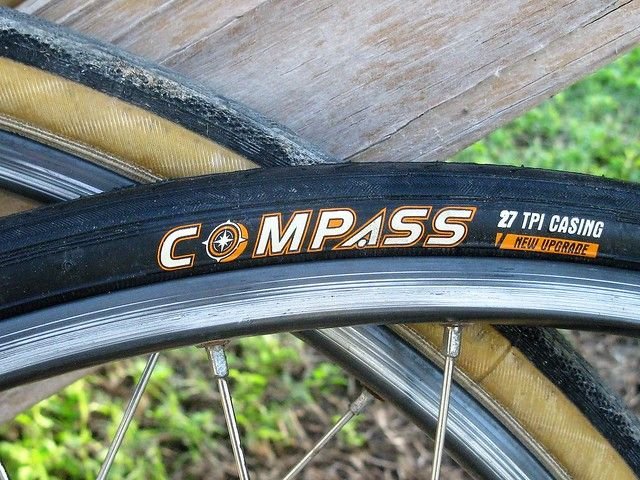
When developing Solaris, its creators paid great attention to efficiency, as an important characteristic of a city car. Therefore, tires with a relatively small mass and low rolling resistance are installed on the machines that have left the assembly line.
| Hyundai SOLARIS ; Year of issue 01.01.2010-01.01.2017; Modification I | |||
| R15 | |||
| Tires | Disks | ||
| Original | 185/65R15 | Original | 6x15 4*100 d54-54.1 ET48 |
| Replacement | 195/60R15 | Replacement | 5-7x15 4*100 d54-100 ET20-52 |
| R16 | |||
| Tires | Disks | ||
| Original | 195/55R16 | Original | 6x16 4*100 d54-54. |
| Replacement | 205/50R16 | Replacement | 6-8x16 4*100 d54-100 ET20-52 |
| Hyundai SOLARIS ; Year of issue 01.01.2017 -; Modification II | |||
| R15 | |||
| Tires | Disks | ||
| Original | 185/65R15 | Original | 6x15 4*100 d54-54.1 ET46-48 |
| Replacement | 195/60R15 | Replacement | 5-7x15 4*100 d54-100 ET20-52 |
| R16 | |||
| Tires | Disks | ||
| Original | 195/55R16 | Original | 6x16 4*100 d54-54. |
| Replacement | 205/50R16 | Replacement | 6-8x16 4*100 d54-100 ET20-52 |
The manufacturer installs Kumho Solus and Hankook Optimo tires on cars, which have the necessary characteristics to ensure proper safety and acoustic comfort.
Kumho tires are a product of a South Korean company that offers high-quality and safe tires for a reasonable price. This is one of the leaders in the tire industry, being for a minute the official supplier of tires for Formula 3. Kumho engineers pay special attention to the appearance of tires, as they believe that the wheel is a serious addition to the overall appearance of the car. Kumho Solus tires are characterized by excellent braking on the verge of blocking, clear and stable handling on any surface, high fuel efficiency and low noise level. Among the weaknesses of the Solus, experts note fairly average skid braking performance.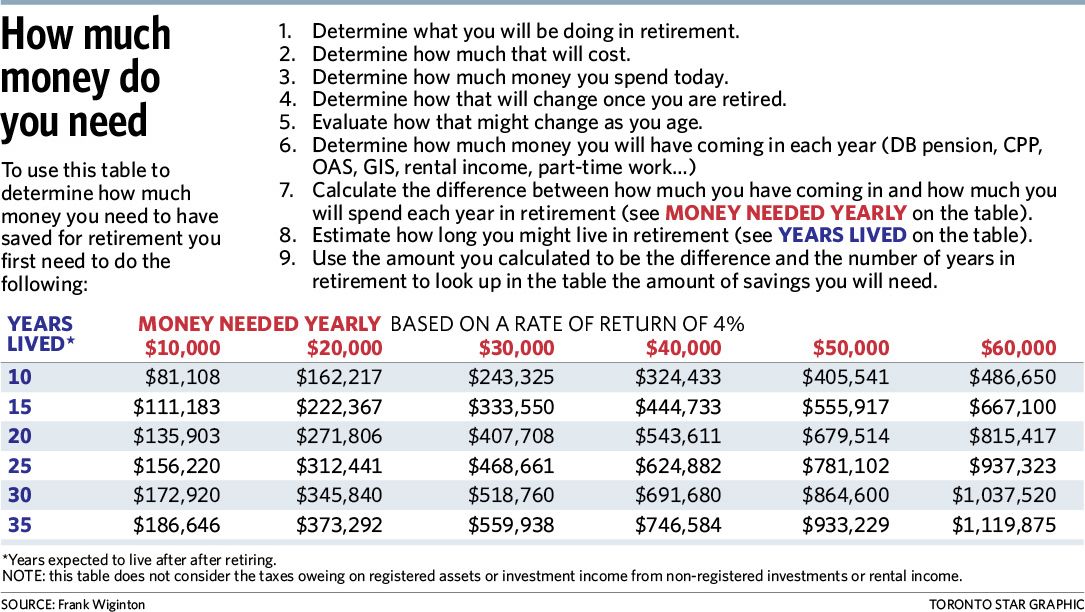
Hankook Tire is also a South Korean tire manufacturer with branches around the world, including Russia and the United States. The company is known for cutting edge developments and brand new concepts in the industry. Hankook Optimo tires are characterized by good directional stability at high speeds, stable behavior during extreme maneuvers, as well as economy when used in urban areas. Among the shortcomings, one can note rather average indicators of smoothness.
Of course, it is not at all necessary to install tires of the same manufacturers on the car that were purchased in the cabin. There are offers on the market in different price categories and from other manufacturers, including Continental, Michelin, Goodyear, Pirelli,
Bridgestone, Yokohama, Nokian. Which brand of tires to buy depends more on personal preferences and financial capabilities, since there are usually no questions about the quality of well-known manufacturers. When buying tires for Solaris, in addition to conforming to standard sizes, you can also focus on the tread pattern and expected operating conditions.
When buying tires for Solaris, in addition to conforming to standard sizes, you can also focus on the tread pattern and expected operating conditions.
The tread pattern can be: symmetrical, asymmetrical and directional. The symmetrical tread pattern is a classic that is still used by most manufacturers, both well-known and not so famous. The main advantage of tires with a symmetrical tread pattern is the optimal price-quality ratio.
Asymmetric tread patterns are becoming more common, especially with high-end brands. Tires with this pattern are more expensive, but their performance is higher, especially in terms of improved release of snow and water from the contact patch with the surface. The installation of such rubber has an important feature. It is necessary to follow the marks "Outside" and "Inside" on the tires, that is, respectively, "Outside" and "Inside". Otherwise, all the advantages of expensive rubber will simply disappear.
Directional tires can be either symmetrical or asymmetrical.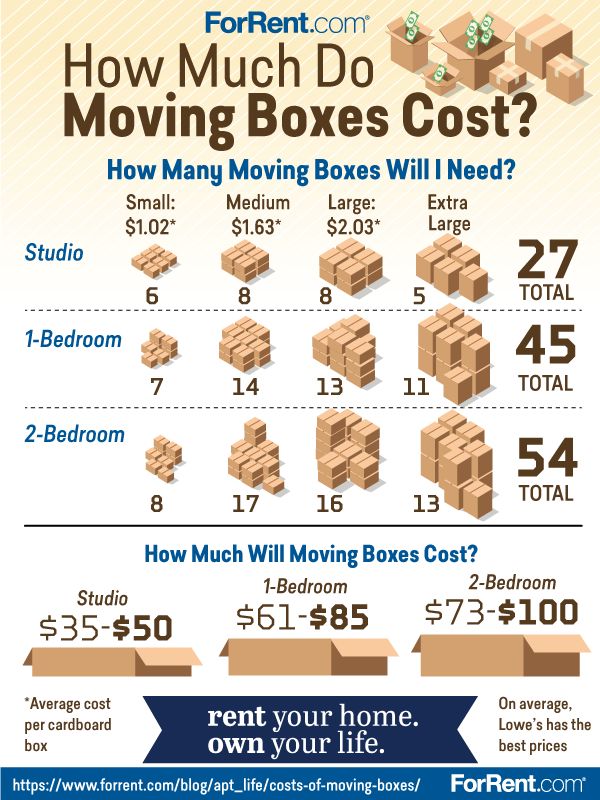 The main advantage of directional tires is their high hydroplaning resistance, which is very important when driving on wet roads. It is only necessary to correctly install the wheels with such tires on the car, otherwise its handling will only worsen. To do this, there is an arrow on the side of the tire showing the direction of rotation of the wheel.
The main advantage of directional tires is their high hydroplaning resistance, which is very important when driving on wet roads. It is only necessary to correctly install the wheels with such tires on the car, otherwise its handling will only worsen. To do this, there is an arrow on the side of the tire showing the direction of rotation of the wheel.
Separately, it is worth noting a special type of car tires - RunFlat tires. These are tires with reinforced sidewalls, which you can continue to ride even after a complete loss of tire pressure. True, you can move in this mode at a speed of no more than 80 km / h and at a distance of no more than 50-150 km. In general, getting to the tire shop is quite realistic. And no need to fiddle around with the spare tire on the road. You can identify such rubber by the RSC badge, although different manufacturers may have their own brand names, for example, Kumho XRP.
However, the main advantage of RunFlat tires is not convenience, but safety. Imagine what would happen if a tire suddenly lost pressure at high speed. To put it mildly, the car will lose control. This will not happen with RunFlat tires. But, however, not everything is so perfect as to consider such tires ideal. Reinforced sidewalls naturally affect the mass of the tire, which does not have the best effect on the comfort and dynamics of the car. But most importantly, RunFlat can only be used in vehicles with a tire pressure monitoring system. Without it, the driver will not feel the loss of pressure, and at high speed the car will be almost uncontrollable. However, the tire pressure monitoring system is available on the second generation Hyundai SOLARIS even in basic trim levels.
Imagine what would happen if a tire suddenly lost pressure at high speed. To put it mildly, the car will lose control. This will not happen with RunFlat tires. But, however, not everything is so perfect as to consider such tires ideal. Reinforced sidewalls naturally affect the mass of the tire, which does not have the best effect on the comfort and dynamics of the car. But most importantly, RunFlat can only be used in vehicles with a tire pressure monitoring system. Without it, the driver will not feel the loss of pressure, and at high speed the car will be almost uncontrollable. However, the tire pressure monitoring system is available on the second generation Hyundai SOLARIS even in basic trim levels.
Since we touched on tire pressure, we will analyze this point in more detail. According to the manufacturer's recommendation, the air pressure in tires of recommended sizes should be 2.2 bar on both front and rear wheels. These are optimal figures, but not a standard. In different situations, deviations from this value are possible. But first, why it is important to stick to the norm.
In different situations, deviations from this value are possible. But first, why it is important to stick to the norm.
A significant deviation of the air pressure in the tires from the recommended ones leads to a change in the size of the tire contact patch with the road. The consequences of too high pressure will be:
Too low pressure is no less detrimental to tires and the car as a whole:
In addition, low tire pressure is simply unprofitable. A 20% decrease in pressure below the norm leads to an increase in gasoline consumption by 3% and reduces tire life by 25%. In general, keep an eye on the air pressure in your tires carefully.
A 20% decrease in pressure below the norm leads to an increase in gasoline consumption by 3% and reduces tire life by 25%. In general, keep an eye on the air pressure in your tires carefully.
Now about possible deviations from the recommended figures. It should be understood that the recommended values \u200b\u200bare a kind of average indicator, which, nevertheless, is calculated by engineers, taking into account the characteristics of the country or region where the car will be operated. Nevertheless, the sharply continental climate of Western Siberia is difficult to accurately calculate, and the temperature drops here are simply colossal. Yes, and with the roads, not everything is smooth - in other places on the pavement with longing you remember the primer.
Therefore, if you are planning a long drive on "killed" roads, the wheel should be slightly under-inflated - by 5-10% in summer and 10-15% in winter. That is, "2 points in a circle", as recommended by the provincial tire shops, this is a completely justified measure.